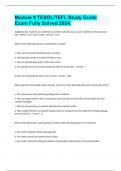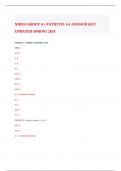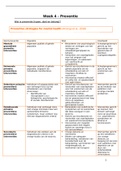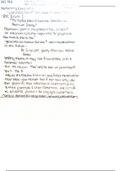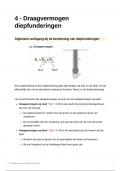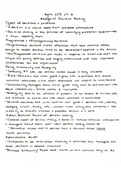Product Software: packaged configuration of software components, or a software-based
service with auxiliary materials, which is released for and traded on a specific market
Types of Product Software
• Shrink-wrapped software: software on mediums that are boxed, shrink-
wrapped and sold in stores
• COTS: software developed for a whole market instead of individual customers
• Packaged software: ready-made software that can be readily obtained from
vendors, and require little modification/customization
• Open-source software: software for which the underlying source code is readily
available for inspection & modification
Key differences between Product Software and Tailor-Made Software:
1. The market introduction requires precise synchronization of dependable software
engineering activities
2. The same product requires installation and usage in different organizations, with
different hardware and software platforms
3. The vendor company stays owner of the software and auxiliary materials, while
usage is licensed to the customers
Organizational structures in Product Software Companies
• F-structure (functional): HRM, Development, Sales, Marketing…
• P-Structure (Product): Google Drive, Google Docs, Gmail, Google Analytics…
• M-Structure (Market): Sales!
• G-Structure (Geographic): Benelux, France, UK department…
o Large international companies have a G-type for sales: in NL you want to
have Dutch employees!
à Conway’s Law: states that a software’s architecture resembles the organizational
structure.
From a customer’s perspective, SaaS products have several
• Advantages:
o You don’t have to install, maintain, store or backup data.
o You’re automatically on the latest release
o New pricing models are advantageous compared to the traditional license
model
o Financial advantage: operating expenses instead of capital expenses
• Disadvantages:
o Data is not stored under your control, but at the vendor
o The availability is dependent on the internet
Synergy: combination/merging of two (or more) businesses (e.g., YouTube & Google)
Business Model Canvas:
• Value Proposition: What are you offering the customers? Why do they benefit
from you as a customer?
• Channel: how do you get your value proposition to your customer?
1
, • Customer relationships: how do you establish & keep your relationship with
your customers?
• Revenue Streams: where does your money come from?
• Key resources: what are your strengths/what resources underpin your business
model?
• Key activities: what do you do all day? What do you need to perform on your
business model?
• Key partners: who do you rely on?
• Cost structure: what are your costs?
• Customer segments: which customers and users are you serving?
Social Network Analysis (SNA)
Modelling and analysis techniques for analyzing a network in general
Two types:
• Product Deployment Context (PDC)
o Describes a context in which a software service operates, the software and
hardware products, and the software services that are required to provide
the software service.
o It offers a quick overview of the architecture and dependenies
• Software Supply Network (SSN)
o Displays all participants in a network, the connections between them, and
the flows describing the type of product that is traded across connections;
participants are any party that provides or requires flows from another
participant in the network
o SSN is good for inter-organizational dependencies and flows
2
, Definition of SaaS: Software as a Service is a software distribution model in which
applications are hosted by a vendor or service provider and made available to customers
over a network, typically the internet.
From a Business perspective, SaaS can have several advantages:
Characteristics Benefits
Network delivered access to commercially No local infrastructure or software to
available software purchase or maintain
Applications & data are available
anywhere with network connectivity
Application delivery is one-to-many model Operating costs are reduced by managing
infrastructure in central locations rather
than at each customer’s site
Built on optimize & robust platform Improved availability and reliability
Customer pays for as much as they need Lower Total Cost of Ownership
when they need it (totaalbedrag aan kosten voor de aanschaf
en het bezit van een product of dienst
gedurende de hele
levenscyclus/gebruikscyclus)
SaaS compared to the Traditional Software Model
• In the traditional model of software delivery, the customers get a permanent
license and assumes that the customers take responsibility for managing the
software
• There are high upfront costs associated with the purchase of the license, as well
as the high burden of the implementation/installation and ongoing maintenance
• The Return On Investment (ROI) (the rendement on an investment) is often
delayed considerable, and due to the rapid pace of technological change,
expensive software solutions can quickly become outdated.
Software Product Management: The discipline that governs a software product over
its whole life cycle, from its beginning to customer delivery, in order to generate the
biggest possible value to the business.
à What’s so special about SPM?
o High release frequency
o Complex requirements, organization & tracking
o Product Manager has a lot of responsibilities, but little authority
o Many stakeholders
o Insignificant lifecycle costs
3


